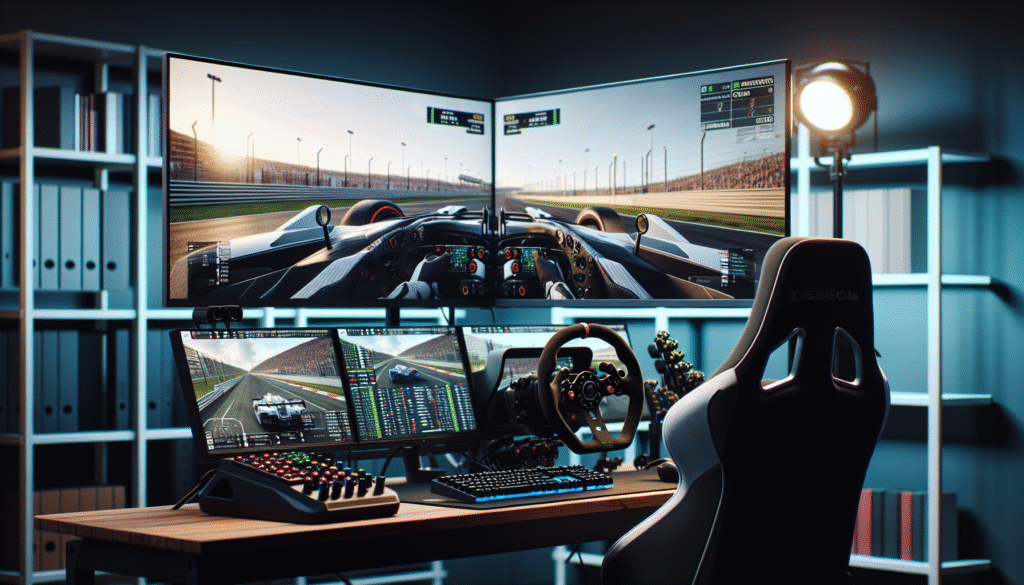“`html
Understanding iRacing’s Safety Rating (SR)
In iRacing, the Safety Rating (SR) is a crucial measure of a driver’s skill and consistency on track, directly affecting their overall performance and experience. The primary components of SR involve incident points, which are incurred from collisions, off-track excursions, and losses of control during races. Each incident point reduces your SR, illustrating the importance of maintaining control throughout your races.
In addition to incident points, achieving clean laps—those free from any incidents—contributes positively to your SR. Interestingly, drivers who manage to avoid any incident points in a session will see their SR continuously improve, thereby enhancing their chances of being promoted to higher skill levels and gaining access to more competitive races. Your driving behavior plays a significant role in this equation. Consistently aggressive or reckless driving can lead to higher incident points, negatively impacting your SR and overall standing in the iRacing community. Conversely, adopting a more strategic approach—focusing on caution and clean racing—will foster a better SR and can ultimately lead to improved lap times and race finishes. For a deeper understanding of how to effectively manage your SR and the implications of your racing tactics, further insights can be found here.
Deciphering iRating (IR): What It Is and How It Works
iRating (IR) is a central feature of the iRacing platform, quantifying a driver’s skill level through complex algorithms that adjust based on race performance. Calculated through race results, iRating considers not only the finishing position but also the iRacing ratings of opponents. In essence, when a driver finishes ahead of others with lower iRatings, they gain points, while drivers finishing behind lose points. The exchange of points is affected by the difference in iRatings between drivers, making close battles more impactful on ratings.
The significance of iRating extends beyond individual rankings; it serves to match drivers of similar skill levels in races, creating competitive environments that enhance the overall experience. This fundamental metric allows for effective sorting into “splits,” where drivers are paired with others who have closely aligned iRatings, ensuring fair competition and improving the quality of racing across diverse skill sets in the iRacing community. The continuous adjustment of iRating ensures that as drivers improve or regress, their competitive placement in events remains relevant, fostering an engaging and challenging racing atmosphere. More details can be found on iRacing Support.
Strategies to Improve Your SR and IR
To enhance your Safety Rating (SR) and iRating in iRacing, consider implementing the following strategies:
Improving Your Safety Rating (SR)
- Practice Consistently: Regular practice is essential. Focus on completing sessions without receiving more than a 1x incident. This includes practicing for the full race duration, which helps you become familiar with race conditions and reduce mistakes.
- Maintain Steady Pace: Work on establishing a smooth and consistent lap time. Avoid aggressive maneuvers that could lead to contact with other cars; maintaining pace can often help you avoid incidents and penalties.
- Utilize Track Guides: Use online resources or racing guides to improve your understanding of tricky corners and overtaking spots on your chosen tracks. Familiarity can lead to better decision-making during races.
- Take Advantage of Qualifying: Qualifying well allows you to start near the front, minimizing the likelihood of being involved in first-lap collisions, which are frequent sources of incident points.
Elevating Your iRating
- Compete Against Strong Fields: Seek races with competitive fields. Battling skilled opponents can result in significant iRating gains if you finish well, as the rating system rewards you for performing well against stronger drivers.
- Focus on Finishing: Aim to complete races rather than just competing for wins. Finishing higher positions consistently contributes to improving your iRating and demonstrates your maturity as a racer.
- Avoid Incidents: Just as with Safety Rating, reducing the number of incidents in races is critical. Each incident lowers your chance of gaining iRating, so focus on clean racing to avoid penalties.
- Analyze Race Data: Reviewing your races using telemetry data can help you identify areas for improvement. Look for patterns in your driving that lead to mistakes and work on them during practice sessions.
By implementing these strategies, you can significantly enhance both your Safety Rating and iRating, paving the way for a successful iRacing career.
Sources
“`

